Humans have always had a thing about the afterlife. The idea that we either land in eternal paradise or face never-ending punishment has shaped religions, cultures, and even pop culture. Think of every movie where someone meets a glowing white figure at the pearly gates or wakes up in a fiery pit of doom.
But here’s the twist. Heaven and Hell weren’t always part of the plan. Early civilizations thought the afterlife was just a shadowy, quiet place. No golden streets, no lakes of fire, just a dull, never-ending existence. Then, as beliefs evolved, the concept of moral justice kicked in. Do good things, you get rewarded. Mess up, and it’s game over.

The road from ancient underworlds to the Heaven vs. Hell showdown we know today is a wild one. The Sumerians had a gloomy underworld, the Egyptians came up with a VIP-only paradise, and the Greeks? They had a little bit of everything. Eventually, Christianity and Islam took the idea to the next level with clear-cut rules on who gets in and who doesn’t.
So how did we get here? What changed over the centuries to turn Heaven and Hell into the ultimate destinations? That’s what we’re about to find out.
Dawn of Afterlife Beliefs (Pre-1500 BCE)
Long before Heaven and Hell became the ultimate destinations, ancient civilizations had a much simpler view of the afterlife. There were no divine rewards, no fiery pits, just a continuation of existence in some form. Death was inevitable, and what happened next was just another phase of being, not a cosmic judgment.
For most early cultures, the afterlife was neutral, a shadowy reflection of earthly life. Some societies believed in underground realms where souls wandered forever. Others thought the dead stuck around as spirits, influencing the living. A few even believed that if you weren’t a king or a hero, you simply ceased to exist.
Sumerians: Welcome to the Land of No Escape
In ancient Mesopotamia, the Sumerians believed in Kur, the underworld where all dead souls ended up, no exceptions. This was not a paradise, but it also wasn’t a place of suffering.

It was a dreary, dusty realm where spirits existed in a ghostly form, surviving on whatever offerings the living left for them. Forget about eternal peace or punishment. You were just stuck in Kur forever, end of story.
Egyptians (Old Kingdom): Pharaohs Get Eternal Life, You Don’t
Ancient Egypt had an early version of the afterlife, but it was strictly members-only. During the Old Kingdom period, only pharaohs were believed to have an afterlife.
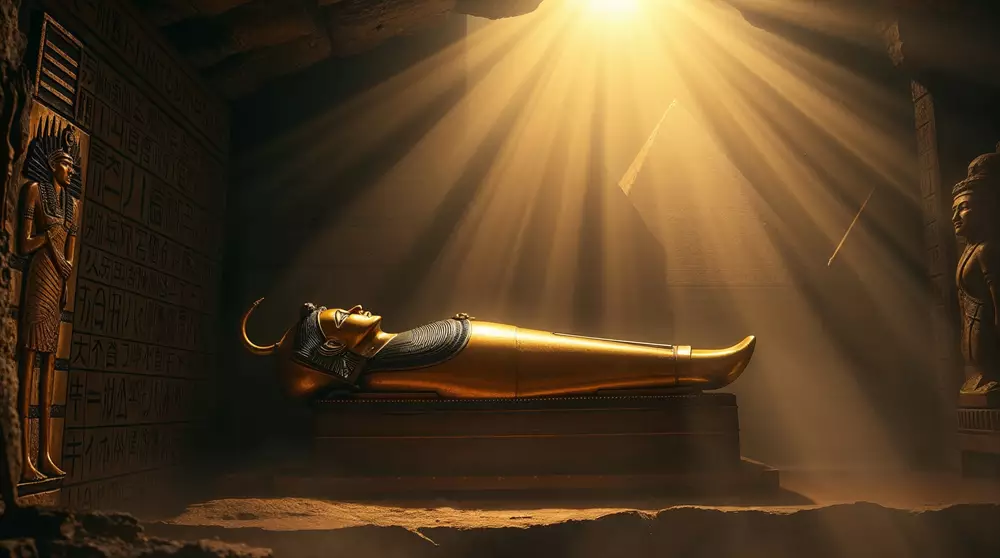
The gods welcomed them into the eternal cycle of life, often sailing through the skies with Ra, the sun god. For everyone else, death was the end. Commoners didn’t make it to the next world, and without the elaborate rituals and tombs that pharaohs received, their souls faded into nothing.
Early Chinese Beliefs: Ancestors Still Matter
In ancient China, the afterlife was less about judgment and more about ancestral continuity. The spirits of the deceased, known as shen, remained tied to their families, influencing the fortune and harmony of their descendants. Rather than ascending to a distant paradise or suffering in a fiery underworld, the dead were honored through ancestor veneration.
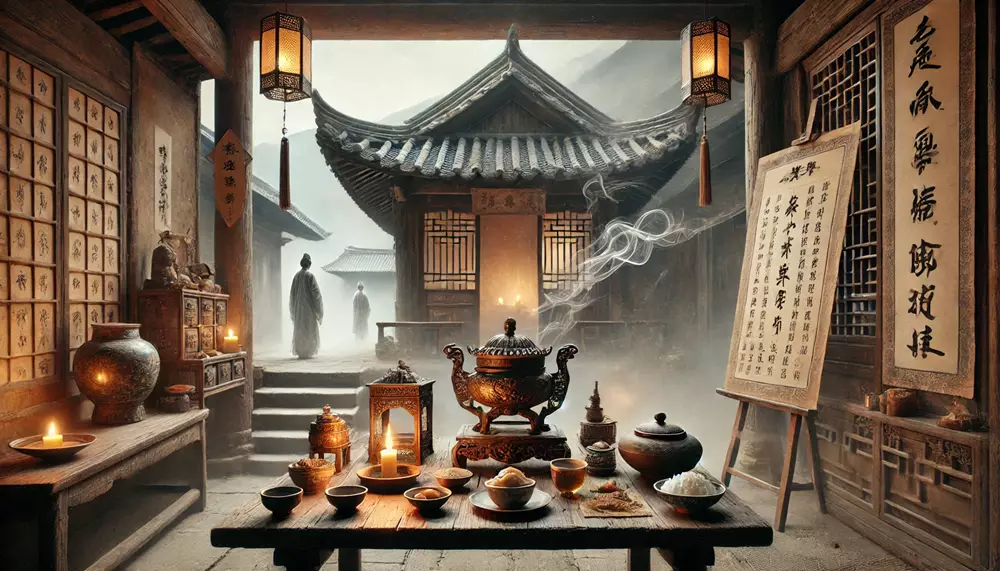
Offerings of food, incense, and spirit money were made at household altars and in ancestral temples to ensure their well-being in the unseen realm. Neglecting these rites risked the spirits becoming hungry ghosts (eguí), wandering restlessly and bringing misfortune. Rooted in Confucian and Daoist traditions, this system shaped Chinese beliefs for millennia, reinforcing the deep bond between the living and the dead.
Indus Valley Civilization: The Mystery of the Dead
The Indus Valley Civilization, one of the earliest urban cultures, left behind no clear texts explaining their beliefs about the afterlife. However, archaeological evidence suggests they practiced careful burials, which hints at some belief in a continued existence.
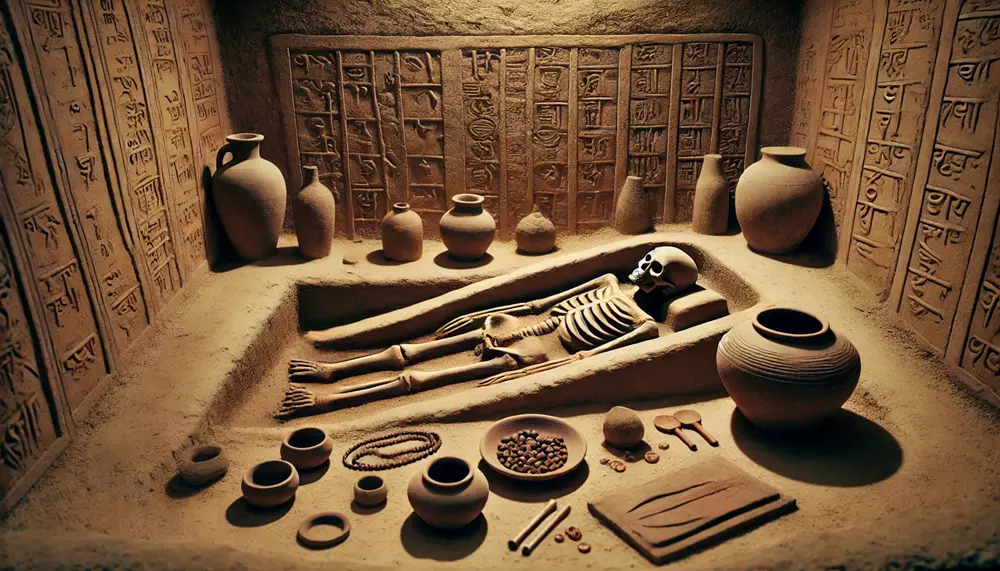
Grave goods, such as tools and ornaments, were buried with the dead, possibly indicating preparation for another phase of life. However, there is no clear evidence that they believed in a structured Heaven or Hell.
The Big Picture
Across these early civilizations, the afterlife wasn’t about morality, rewards, or punishments. It was either a shadowy continuation of life, a privileged afterlife for rulers, or a spiritual connection between the living and the dead. The idea of being judged and sent to a paradise or place of suffering was still far in the future.
That shift, the moment when death started meaning more than just passing into another existence is what comes next.
The Shift from Neutral Afterlife to Moral Judgment (1500 BCE – 500 BCE)
In the early days, the afterlife was like a one-size-fits-all waiting room, everyone ended up in the same place, no questions asked. But between 1500 BCE and 500 BCE, things got interesting. Cultures started thinking that maybe, just maybe, what you did while alive could affect your afterlife accommodations. Let’s dive into how this idea of moral judgment after death took root.
Egyptians Level Up: The Weighing of the Heart
The ancient Egyptians had a major afterlife glow-up during the Middle and New Kingdom periods. They introduced the “Weighing of the Heart” ceremony. Here’s the deal: when you died, your heart (believed to record all your deeds) was weighed against Ma’at’s feather, symbolizing truth and justice.
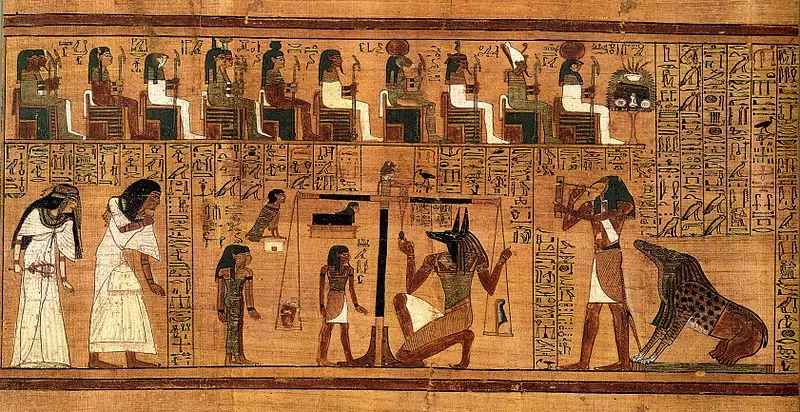
If your heart was lighter, congrats, you got a ticket to paradise. If heavier, uh-oh, your heart became a snack for Ammit, the devourer, and your soul faced eternal darkness. Talk about pressure to be good!
Hindu Vedic Traditions: Karma’s Early Days
In ancient India, the Vedic traditions introduced the concept of karma, the cosmic law of cause and effect that governed not just this life but future existences. A person’s dharma (righteous duty) shaped their fate, determining whether their ātman (soul) would ascend to Svarga, the heavenly realm of the gods like Indra, or descend into Naraka, the shadowy, temporary hell where souls atoned for misdeeds before rebirth.
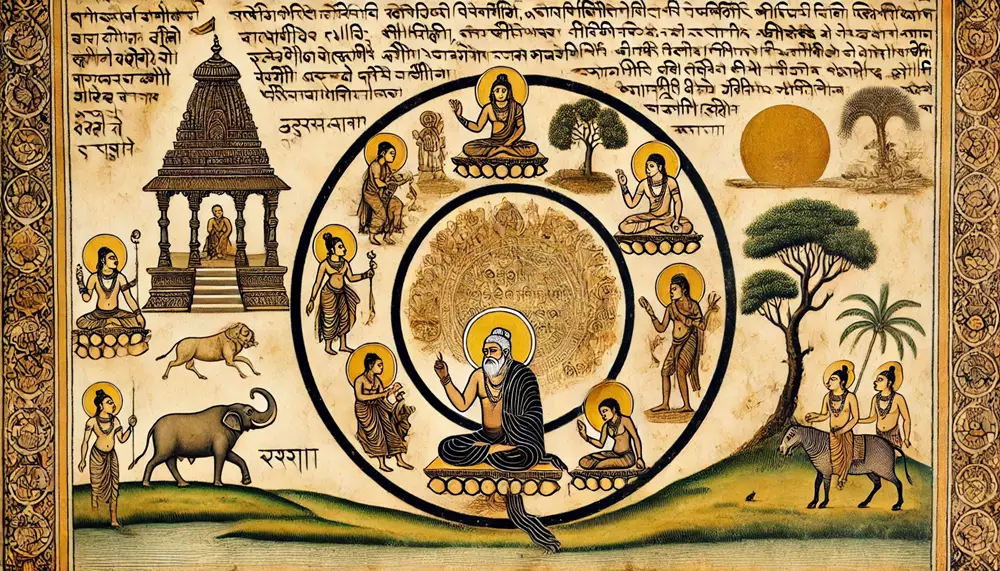
Unlike later rigid notions of eternal damnation or paradise, these realms were not permanent; they were waystations in the cycle of samsāra (reincarnation). The ultimate goal was not to linger in any afterlife but to attain moksha, liberation from the cycle, and merge with Brahman, the universal consciousness.
Zoroastrianism: The Original Heaven and Hell
In ancient Persia, Zoroastrianism introduced one of the earliest structured visions of the afterlife, rooted in the cosmic struggle between Ahura Mazda (the force of good) and Angra Mainyu (the force of chaos and evil). After death, souls faced judgment at the Chinvat Bridge, where their deeds were weighed.
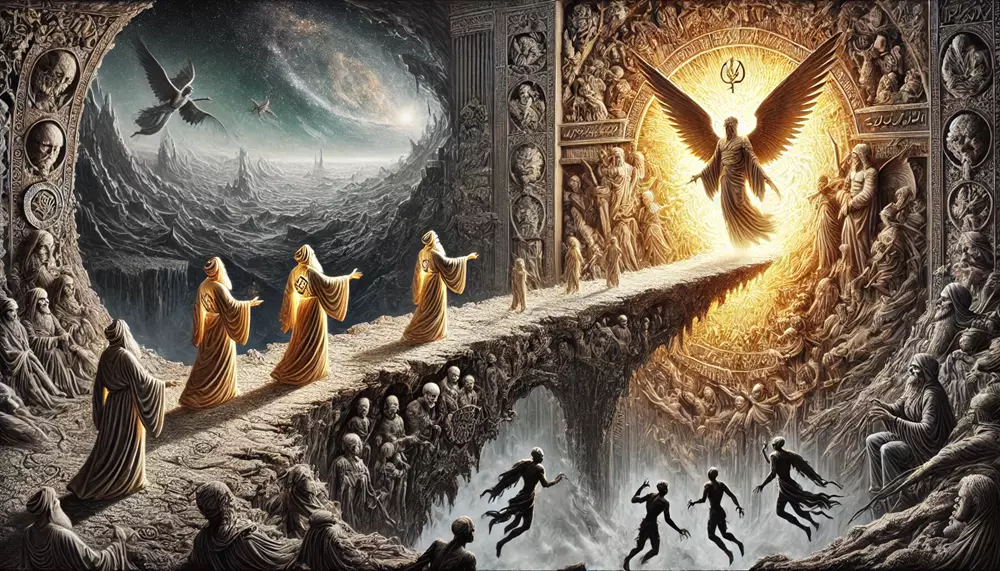
The righteous were guided across the broad, golden path to the House of Song (Garōdmān), a realm of divine harmony and eternal bliss. The wicked, however, saw the bridge narrow into a razor-sharp edge, sending them plunging into the abyss of Druj Demana, the House of Lies, a dark, tormented wasteland of suffering. This dualistic concept of moral consequence after death later shaped elements of Judaism, Christianity, and Islam, laying the foundation for the classic Heaven-and-Hell paradigm.
Mesoamerican Myths: Cosmic Realms and Underworlds
Across the ocean, Mesoamerican civilizations like the Maya and Olmec had their own intricate visions of the afterlife. The Maya believed that after death, souls descended into Xibalba, the shadowy underworld ruled by the Lords of Death.

This afterlife was not a final resting place but a perilous journey through nine treacherous levels, filled with trials, rivers of blood, and skeletal deities. Some souls, through ritual knowledge or divine favor, could ascend to Tamoanchan, the paradise of the gods. Meanwhile, Olmec burial sites suggest a belief in a cyclical afterlife, where rulers and elites were buried with sacred jade masks and ceremonial axes, possibly to assist in their rebirth or continued existence in the spiritual realm
The Big Picture: Morality Matters Now
This era marked a significant shift. The afterlife transformed from a neutral zone into a moral playing field. Your actions in life started to determine your fate after death. This change didn’t just alter religious beliefs; it reshaped societal norms, encouraging people to live ethically to secure a favorable afterlife.
Chapter 3: The Rise of Structured Afterlife in Early Monotheistic Religions (500 BCE – 500 CE)
Between 500 BCE and 500 CE, the afterlife went through a major transformation. Early monotheistic religions started laying down the law: behave, and you’re in for paradise; mess up, and, well, eternal consequences await. Let’s see how these ideas took shape across different faiths.
Judaism: From Sheol to the World to Come
In early Jewish thought, the afterlife was centered around Sheol, a shadowy, silent underworld where all souls, righteous and wicked alike, dwelled in a state of quiet existence. Unlike later depictions of Heaven and Hell, Sheol was not a place of reward or punishment, but a neutral waiting place.

However, during the Second Temple period (515 BCE – 70 CE), Jewish eschatology evolved. The concept of Olam Ha-Ba (“The World to Come”) emerged, offering the promise of resurrection and divine justice. The righteous would partake in a renewed, perfected world, while the wicked faced exclusion or annihilation. Influences from Persian Zoroastrianism and Hellenistic thought contributed to these evolving beliefs, paving the way for afterlife concepts in Rabbinic Judaism, Christianity, and Islam.
Early Christianity: Heaven and Hell Defined
Early Christianity redefined the afterlife with a clear-cut moral framework, drawing from Jewish apocalyptic traditions and Greek philosophical influences. The righteous were promised eternal communion with God in Heaven (ouranos), depicted as a realm of divine light, peace, and joy. Meanwhile, sinners faced Hell (Gehenna), a place of fiery torment and separation from God, inspired by Jewish references to the Valley of Hinnom, where waste and corpses burned outside Jerusalem.
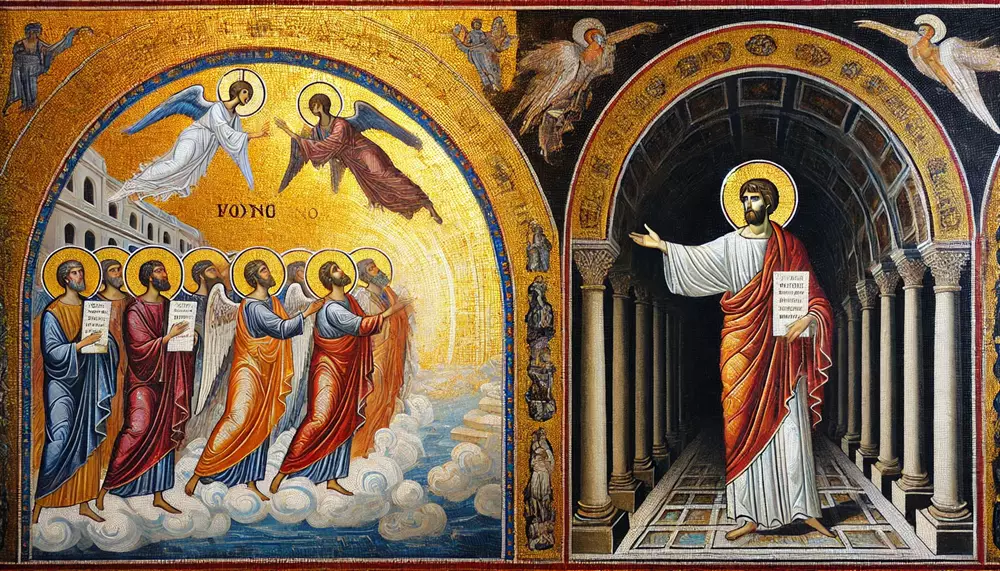
These contrasting fates were emphasized in Jesus’ parables and early Christian writings, solidifying the idea that life’s choices determined one’s eternal destiny. This dualistic afterlife shaped Christian doctrine, influencing everything from medieval theology to modern-day depictions of paradise and damnation.
Buddhism: Naraka and the Cycle of Rebirth
In Buddhist cosmology, the afterlife is not a permanent judgment but a temporary phase in the cycle of rebirth (samsara). Those with negative karma may descend into Naraka, a realm of intense suffering where souls atone for their misdeeds. Unlike the eternal damnation of Western traditions, Naraka is not a final destination, souls eventually leave once their karmic consequences are fulfilled.

Meanwhile, those with good karma may be reborn in higher realms, including celestial heavens, but even these are impermanent. The ultimate goal is to escape the cycle of rebirth entirely by achieving nirvana, a state of enlightenment and liberation from suffering. This belief shaped Buddhist ethics, emphasizing that all actions have consequences but that change and redemption are always possible.
The Big Picture: Moral Accountability Takes Center Stage
This period marked a significant evolution: the afterlife became a structured system of reward and punishment. Heaven and Hell (or their equivalents) were no longer vague ideas but well-defined destinations, reinforcing the notion that our actions have lasting consequences beyond this life.
Chapter 4: Medieval Theological Refinements (500 CE – 1400 CE)
Between 500 CE and 1400 CE, the concepts of Heaven and Hell got a serious makeover. Religions didn’t just talk about the afterlife; they painted vivid pictures of what awaited us, using art, literature, and teachings to make it all feel real. Let’s explore how different cultures during the medieval period reimagined the great beyond.
Catholic Christianity: Dante’s Guided Tour of the Afterlife
In Catholic Christianity, the afterlife became vividly structured through Dante Alighieri’s Divine Comedy in the 14th century. Drawing from Catholic theology, classical mythology, and medieval imagination, Dante described a detailed, layered afterlife. Inferno depicted nine circles of Hell, where sinners faced punishments fitting their sins, gluttons wallowed in filth, the violent boiled in rivers of blood, and traitors were frozen in ice.

Purgatorio introduced a transitional realm where souls purified themselves before reaching Paradiso, a celestial paradise bathed in divine light. Though a literary work, Dante’s vision of Hell, Purgatory, and Heaven deeply influenced Christian thought, shaping artistic and theological representations of the afterlife for centuries.
Islamic Theology: Mapping the Afterlife
In Islamic theology, the afterlife is a well-defined moral system, where Jannah and Jahannam serve as ultimate destinations based on a person’s deeds. Jannah is described as a paradise with gardens, flowing rivers, and eternal peace, granted to those who lived righteously and followed Allah’s guidance.

Jahannam, on the other hand, is a multi-layered hell where sinners face different degrees of punishment, tailored to the severity of their misdeeds. Some souls endure purification before being granted mercy, while others remain in suffering. These descriptions, drawn from the Quran and Hadith, emphasize moral accountability, reinforcing the idea that choices in life determine one’s fate in the next world.
Norse Mythology: Warrior’s Paradise vs. the Underworld
In Norse mythology, the afterlife was deeply tied to honor and the manner of death. Warriors who died gloriously in battle were chosen by the Valkyries and brought to Valhalla, Odin’s great hall, where they feasted, fought, and prepared for Ragnarök.

Those who died of sickness or old age, however, were sent to Helheim, a cold and shadowy underworld ruled by Hel, the half-living, half-dead goddess. Unlike the fiery torment of other traditions, Helheim was a place of quiet, indifferent existence rather than active suffering. This stark contrast between Valhalla and Helheim reinforced Norse values of bravery, strength, and fate, shaping Viking attitudes toward life and death.
Tibetan Buddhism: Navigating the Bardo
In Tibetan Buddhism, death is not the end but a transition through the Bardo, an intermediate state between death and rebirth. According to the Bardo Thodol (Tibetan Book of the Dead), the soul experiences visions, deities, and karmic reflections based on past actions. Some encounter peaceful Buddhas and Bodhisattvas, guiding them toward liberation and enlightenment. Others face terrifying manifestations, which are actually illusions created by their own mind.
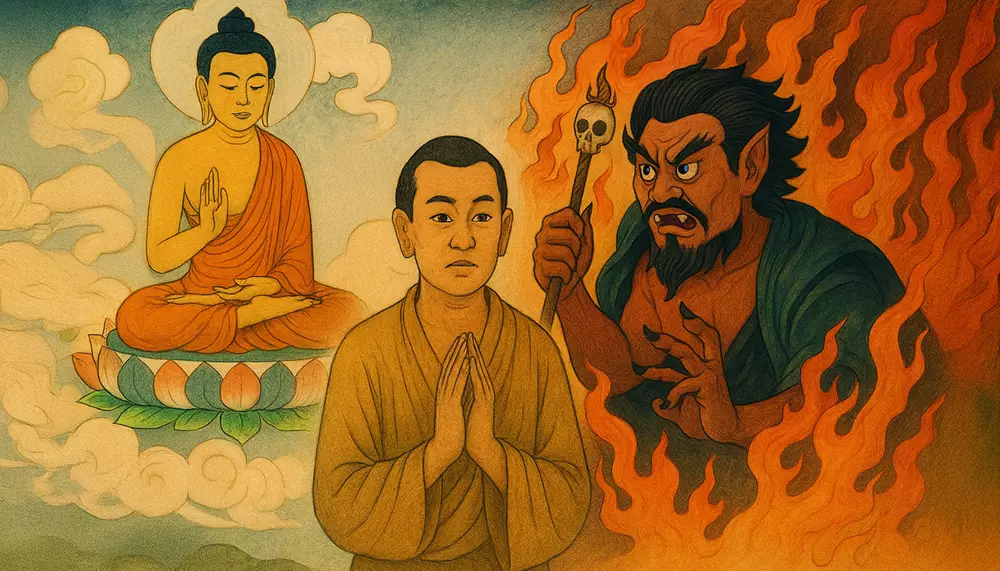
If the soul recognizes these experiences for what they are, it may escape samsara (the cycle of rebirth) and achieve nirvana. Otherwise, it moves toward rebirth, potentially in a higher or lower realm, depending on accumulated karma. This belief emphasizes awareness, preparation for death, and spiritual discipline.
The Big Picture: Afterlife Imagery Shapes Belief and Behavior
During the medieval period, detailed portrayals of Heaven and Hell became central to religious teachings. These vivid images weren’t just for storytelling; they influenced art, culture, and personal conduct, reinforcing the idea that actions in this life have eternal consequences.
The Renaissance & Enlightenment Shift (1400 CE – 1800 CE)
Between 1400 and 1800 CE, the afterlife’s VIP sections, Heaven and Hell, faced some serious scrutiny. As science and reason gained traction, folks started questioning age-old beliefs about what happens after we kick the bucket. Let’s see how this period shook up our ideas of the great beyond.
European Christianity: Reformation Remix
In European Christianity, the afterlife underwent a major shake-up during the Protestant Reformation. The Catholic Church had long taught the existence of Purgatory, a place where souls purified themselves before entering Heaven. However, the sale of indulgences, payments to reduce time in Purgatory, sparked outrage.
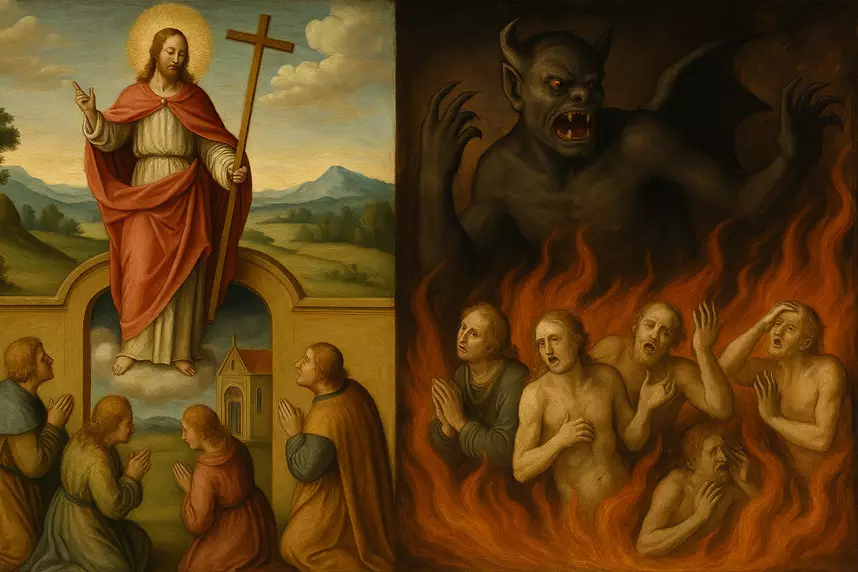
In 1517, Martin Luther posted his Ninety-Five Theses, criticizing indulgences and questioning the very idea of Purgatory. His challenge led to a theological revolution, as Protestant reformers rejected Purgatory altogether, emphasizing salvation through faith alone (sola fide). This debate over the afterlife reshaped Christianity, dividing views on judgment, forgiveness, and what happens after death.
Deism and Secular Thought: The Age of Reason
During the Age of Enlightenment, religious views on the afterlife took a backseat to reason, science, and individual thought. Deism emerged as a belief system that acknowledged a Creator but rejected divine intervention in human affairs. Deists saw God as a “cosmic clockmaker”, who set the universe in motion and then stepped away, leaving humanity to govern itself.
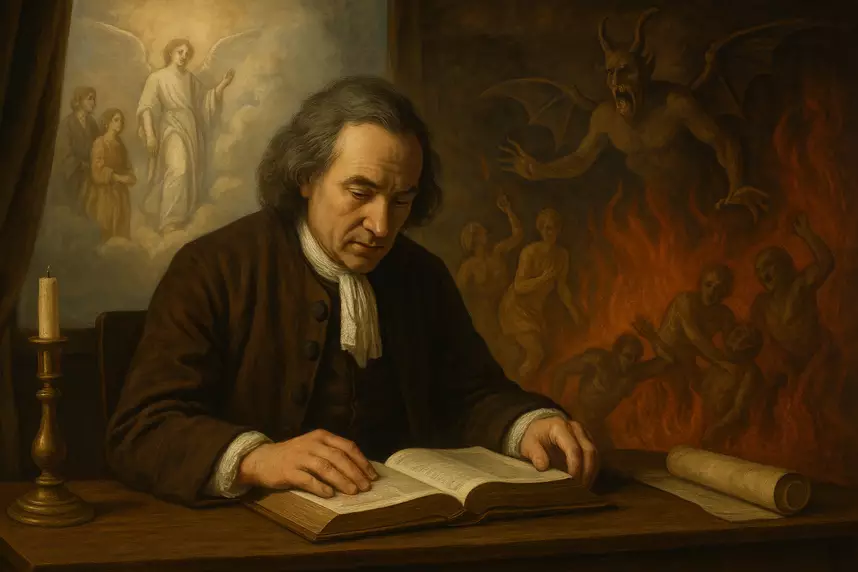
This shift meant that for many, Heaven and Hell became less central, with emphasis placed instead on morality, rationality, and human progress. Thinkers like Voltaire and Thomas Paine championed this view, influencing the rise of secularism, where ethical living and societal advancement replaced concerns about an afterlife.
China & Confucianism: Keep It Real
In Confucianism, the afterlife was not the main concern, life itself was. Unlike religious traditions that focused on Heaven and Hell, Confucian thought emphasized filial piety (Xiao), social harmony (Li), and personal virtue as the path to a meaningful existence. Ancestor worship was central, but it was more about respecting family lineage than securing an afterlife reward.

The spirits of ancestors were honored through rituals, but Confucianism encouraged people to focus on earthly duties and moral integrity rather than divine judgment. This pragmatic approach made Confucianism a guiding philosophy in China for millennia, shaping culture, governance, and daily life with an emphasis on here and now over the hereafter.
Folk Spirituality: Ghosts and Ghouls Galore
In folk spirituality, the afterlife wasn’t just a theological debate, it was a living, breathing presence in daily life. Across cultures, people believed in ghosts, restless spirits, and supernatural forces that roamed the earth. Ancestral spirits were honored, vengeful ghosts were feared, and mysterious hauntings became cautionary tales.
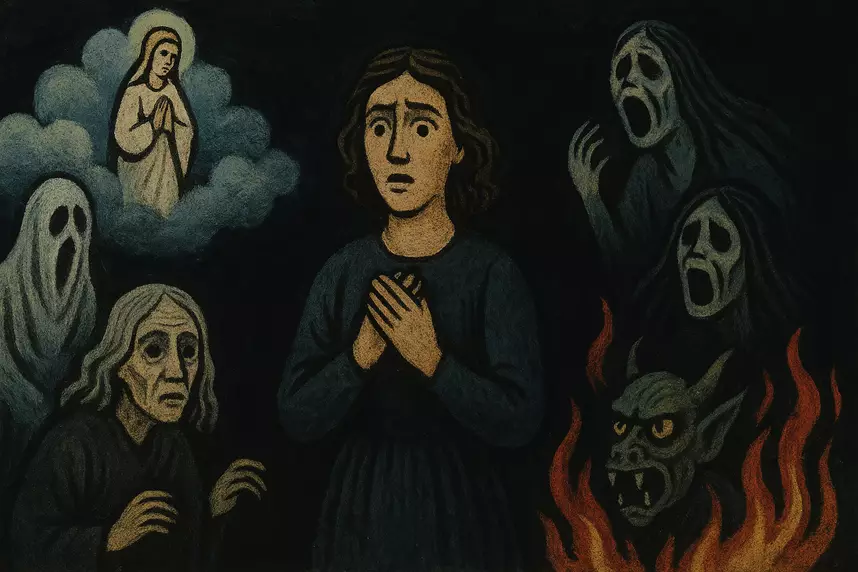
From Chinese hungry ghosts (Egui) to European banshees and Latin American La Llorona, these spirits served as both moral warnings and entertainment. Even as science and rationalism gained ground, folk traditions kept the spirit world alive, blending cultural fears, beliefs, and the age-old need to explain the unexplainable.
The Big Picture: Shifting Focus
This era didn’t erase beliefs in Heaven and Hell but reshaped them. Scientific advances and philosophical shifts encouraged people to question and redefine the afterlife. While traditional views persisted, the seeds of secularism and personal interpretation were sown, leading to the diverse beliefs we see today.
The Modern Era – Science, Secularism, and Spiritualism (1800 CE – 1950 CE)
From the 19th to the mid-20th century, our ideas about the afterlife took some unexpected turns. Science and secularism started calling the shots, but that didn’t stop people from trying to chat with the dead. Let’s dive into how Heaven and Hell got reimagined during this time.
Science and Secularism: Questioning the Afterlife
With the rise of science and secularism, the afterlife faced serious scrutiny. As the Industrial Revolution transformed society, advancements in biology, astronomy, and physics challenged religious interpretations of existence. Charles Darwin’s theory of evolution questioned the divine origins of life, while breakthroughs in medicine and neurology suggested that consciousness was tied to the brain – not an immortal soul.
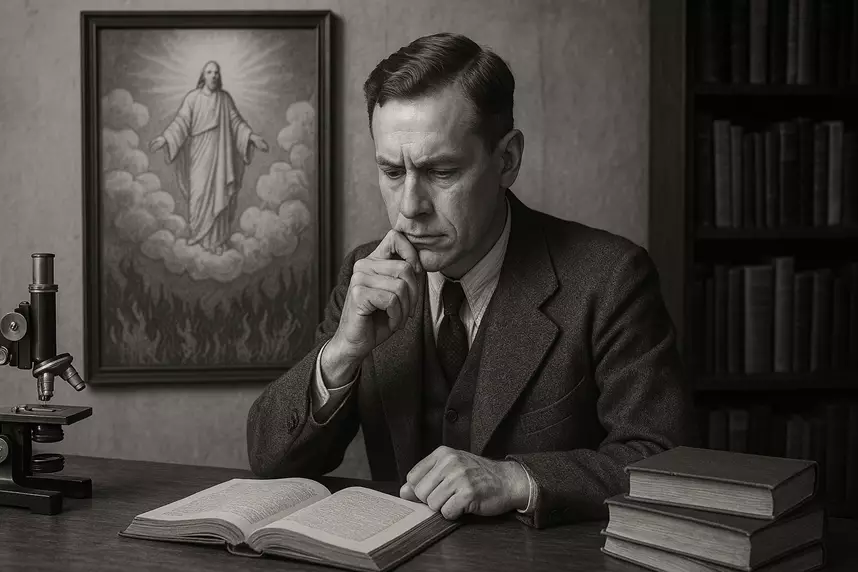
The old fire-and-brimstone narratives began to feel outdated, and many turned to philosophy, psychology, and scientific inquiry for answers. While belief in an afterlife didn’t disappear, the focus shifted from religious doctrine to secular existentialism, where meaning and morality were sought in life itself rather than in the promise of eternity.
The Rise of Spiritualism: Ghosts in the Parlor
Despite the scientific buzzkill, the 19th century saw a surge in Spiritualism, a movement claiming we could communicate with the departed. It all kicked off in 1848 with the Fox sisters in New York, who convinced folks they were chatting with spirits through mysterious knocks.
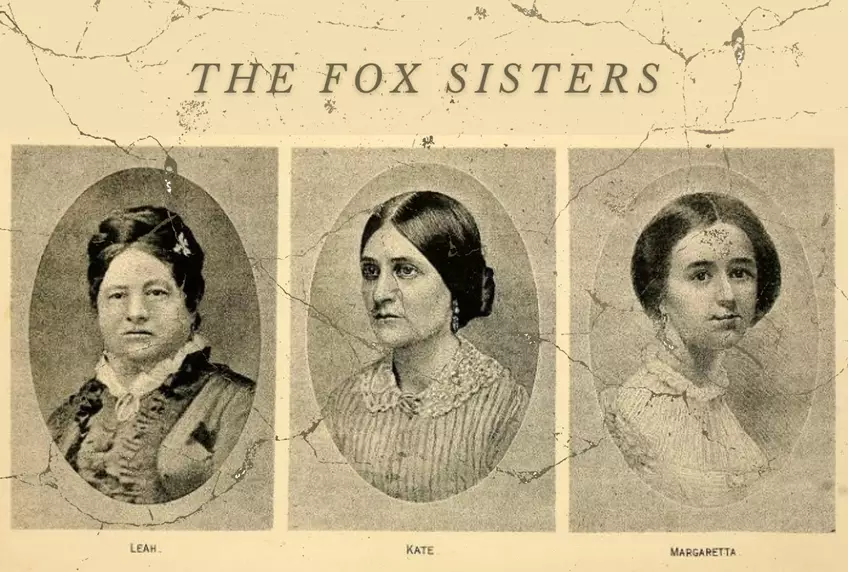
and soon séances, spirit photography, and table-rapping mediums became all the rage. Even as science and skepticism grew, the movement persisted, offering a blend of supernatural belief and empirical curiosity. Though many mediums were later exposed as frauds, Spiritualism didn’t fade, it evolved, influencing modern paranormal investigations and keeping humanity’s age-old hope for contact with the beyond alive.

The Big Picture: A Fork in the Afterlife Road
During this era, beliefs about Heaven and Hell were anything but uniform. Science and secularism prompted many to rethink or even dismiss traditional afterlife concepts. At the same time, movements like Spiritualism kept the conversation, and the hope, alive. This period set the stage for our current, diverse perspectives on what (if anything) awaits us after death.
Modern Views on the Afterlife & The Future of Heaven and Hell (1950 CE – Today)
From 1950 onwards, our ideas about the afterlife have been on a wild ride. With science, pop culture, and personal spirituality all throwing in their two cents, the classic notions of Heaven and Hell have gotten a serious makeover. Let’s break down how our modern world is reshaping what happens after we kick the bucket.
Heaven and Hell in Pop Culture: From Fire and Brimstone to The Good Place
In modern pop culture, the afterlife has taken on new life, often far removed from the fire-and-brimstone narratives of the past. TV shows like The Good Place reimagine Heaven and Hell with ethics, humor, and plot twists, turning the afterlife into a moral puzzle.

Films like What Dreams May Come and Beetlejuice explore surreal, deeply personal versions of the beyond, while books and comics craft fantastical or even bureaucratic visions of the next world. Whether comedic, philosophical, or terrifying, these modern takes reflect society’s shifting beliefs, blending entertainment with existential curiosity about what really happens after we die.
Near-Death Experiences (NDEs): Science Meets the Supernatural
Near-Death Experiences (NDEs) blur the line between science and spirituality, leaving both skeptics and believers fascinated. Reports of bright lights, out-of-body sensations, and encounters with deceased loved ones have led some to see NDEs as glimpses into the afterlife.

Others argue that these experiences are just neurological responses, triggered by oxygen deprivation, brain chemicals, or psychological factors. Researchers have studied NDEs across cultures, noting common themes but no definitive proof of what they mean. Whether evidence of an afterlife or just the brain’s last fireworks show, NDEs continue to spark debate, keeping humanity’s curiosity about what lies beyond alive.
Rise of Non-Religious Spirituality: DIY Afterlife Beliefs
In the modern era, spirituality without religion has reshaped afterlife beliefs into a custom, mix-and-match experience. Many people step away from organized faith but still hold onto ideas of an afterlife, drawing from multiple traditions, personal experiences, and philosophical perspectives.

Some envision reincarnation with a twist, others believe in energy transformation, and some see the afterlife as a continuation of consciousness beyond the physical realm. With no fixed doctrine, this DIY spirituality allows individuals to explore the great beyond on their own terms – a cosmic afterlife buffet, no religious membership required.
Simulation Theory & AI: Uploading Consciousness?
In the digital age, the afterlife might not be otherworldly, it could be artificial. Simulation Theory suggests that our reality is just a complex program, meaning death could be nothing more than a system shutdown or a transfer to another simulation. Meanwhile, AI and neuroscience explore the possibility of uploading human consciousness, preserving personalities in a digital realm where minds could live forever.
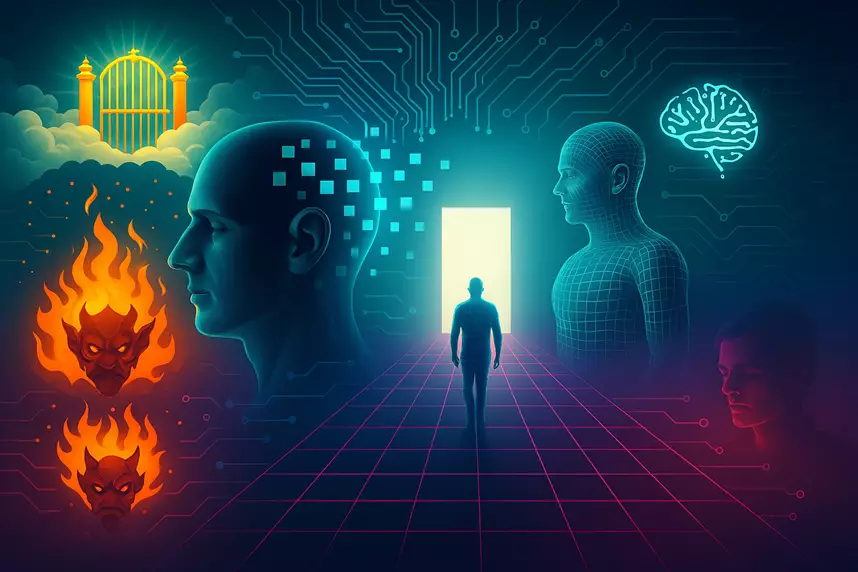
Whether it’s a high-tech version of Heaven, a never-ending Matrix, or just sci-fi speculation, these theories challenge traditional ideas of the afterlife, asking if immortality might one day be engineered instead of earned.
The Big Picture: Afterlife 2.0
n today’s world, the afterlife isn’t one-size-fits-all, it’s a choose-your-own-adventure. Some still hold onto traditional Heaven and Hell, while others imagine reincarnation, digital consciousness, or energy transformation. Pop culture, near-death experiences, and scientific theories all shape modern perspectives, making the afterlife feel more like a personalized playlist than a universal doctrine. Whether it’s a spiritual journey, a technological breakthrough, or just the great unknown, one thing is certain – the debate isn’t ending anytime soon, and the next twist in the story of the afterlife is just waiting to unfold.
Sources and References
“Death and Afterlife: Themes & Beliefs“
StudySmarter
This article explores ancient Egyptian beliefs about the afterlife, including the journey to the underworld and judgment by Osiris.
“Afterlife Beliefs: Religions & Themes“
Vaia
This source delves into various religious perspectives on the afterlife, including those of ancient Egyptians and indigenous animistic religions.
“Beliefs and Rites: Funerals and Burial in Ancient Mesopotamia“
Brewminate
An examination of Mesopotamian afterlife beliefs, describing a dim underworld where souls led a shadowy existence.
“The Mythology of Afterlife Beliefs and Their Impact on Religious Conflict“
Brigid Burke, Religious Theory
This article discusses transformations in afterlife beliefs in the Near East around the 6th and 5th centuries BCE, highlighting the emergence of moral judgments in the afterlife.
“The Rise and Fall of Ancient Religions: An Analysis of Cultural and Historical Transformations“
ResearchGate
This paper analyzes the evolution of ancient religious beliefs, including concepts of the afterlife across various cultures.
“Islamic Views on the Afterlife”
patheos
An exploration of Islamic teachings on life after death, including descriptions of paradise (Jannah) and hell (Jahannam).
“The Afterlife in Norse Mythology”
norse-mythology.org
This piece explores Norse beliefs about life after death, including Valhalla and Hel.






